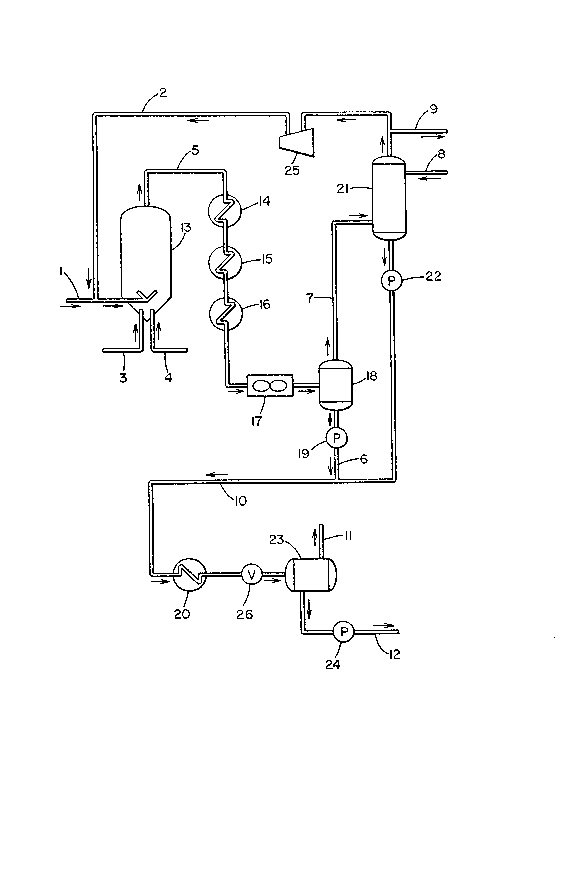Some of the information on this Web page has been provided by external sources. The Government of Canada is not responsible for the accuracy, reliability or currency of the information supplied by external sources. Users wishing to rely upon this information should consult directly with the source of the information. Content provided by external sources is not subject to official languages, privacy and accessibility requirements.
Any discrepancies in the text and image of the Claims and Abstract are due to differing posting times. Text of the Claims and Abstract are posted:
| (12) Patent Application: | (11) CA 2083459 |
|---|---|
| (54) English Title: | PROCESS FOR THE FLUIDIZED BED OXIDATION OF ETHANE TO ACETIC ACID |
| (54) French Title: | PROCEDE D'OXYDATION SUR LIT FLUIDISE DE L'ETHANE EN ACIDE EN ACETIQUE |
| Status: | Deemed Abandoned and Beyond the Period of Reinstatement - Pending Response to Notice of Disregarded Communication |
| (51) International Patent Classification (IPC): |
|
|---|---|
| (72) Inventors : |
|
| (73) Owners : |
|
| (71) Applicants : |
|
| (74) Agent: | GOWLING WLG (CANADA) LLP |
| (74) Associate agent: | |
| (45) Issued: | |
| (22) Filed Date: | 1992-11-20 |
| (41) Open to Public Inspection: | 1993-06-10 |
| Examination requested: | 1999-11-18 |
| Availability of licence: | N/A |
| Dedicated to the Public: | N/A |
| (25) Language of filing: | English |
| Patent Cooperation Treaty (PCT): | No |
|---|
| (30) Application Priority Data: | ||||||
|---|---|---|---|---|---|---|
|
CSL-P-5033
ABSTRACT OF THE DISCLOSURE
Disclosed is a process for oxidizing ethane to acetic acid which
comprises feeding ethane and a recycle gas to a fluidized bed reaction
zone containing fluidized particulate solid oxidation catalyst, feeding a
molecular oxygen-containing gas separately from said ethane to said
reaction zone so that said molecular oxygen-containing gas first mixes
with the major portion of the combustible hydrocarbon feed gases within
the fluidized bed, said process including the steps of (1) cooling the
gaseous effluent from the reaction zone, (2) separating most of the acetic
acid in liquid form from the effluent gases, leaving a gaseous stream
containing nearly all of the carbon oxides contained in said effluent, (3)
purging a small portion of said gaseous stream and recycling most of said
gaseous stream as part of the feed to said reaction zone,
wherein said purging serves to prevent build-up of carbon oxides in
the reaction zone, and said recycling serves to maintain a high proportion
of carbon oxides in said reaction zone gases, thus aiding in moderating
the temperature elevating effect of the highly exothermic oxidation
reaction in said reaction zone.
A.BD1
A.BD2
Note: Claims are shown in the official language in which they were submitted.
Note: Descriptions are shown in the official language in which they were submitted.

2024-08-01:As part of the Next Generation Patents (NGP) transition, the Canadian Patents Database (CPD) now contains a more detailed Event History, which replicates the Event Log of our new back-office solution.
Please note that "Inactive:" events refers to events no longer in use in our new back-office solution.
For a clearer understanding of the status of the application/patent presented on this page, the site Disclaimer , as well as the definitions for Patent , Event History , Maintenance Fee and Payment History should be consulted.
| Description | Date |
|---|---|
| Application Not Reinstated by Deadline | 2003-11-20 |
| Time Limit for Reversal Expired | 2003-11-20 |
| Inactive: Abandoned - No reply to s.30(2) Rules requisition | 2003-02-10 |
| Deemed Abandoned - Failure to Respond to Maintenance Fee Notice | 2002-11-20 |
| Inactive: S.30(2) Rules - Examiner requisition | 2002-10-10 |
| Amendment Received - Voluntary Amendment | 2000-02-01 |
| Letter Sent | 1999-12-07 |
| Inactive: Status info is complete as of Log entry date | 1999-12-07 |
| Inactive: Application prosecuted on TS as of Log entry date | 1999-12-07 |
| Request for Examination Requirements Determined Compliant | 1999-11-18 |
| All Requirements for Examination Determined Compliant | 1999-11-18 |
| Application Published (Open to Public Inspection) | 1993-06-10 |
| Abandonment Date | Reason | Reinstatement Date |
|---|---|---|
| 2002-11-20 |
The last payment was received on 2001-10-12
Note : If the full payment has not been received on or before the date indicated, a further fee may be required which may be one of the following
Patent fees are adjusted on the 1st of January every year. The amounts above are the current amounts if received by December 31 of the current year.
Please refer to the CIPO
Patent Fees
web page to see all current fee amounts.
| Fee Type | Anniversary Year | Due Date | Paid Date |
|---|---|---|---|
| MF (application, 5th anniv.) - standard | 05 | 1997-11-20 | 1997-09-19 |
| MF (application, 6th anniv.) - standard | 06 | 1998-11-20 | 1998-09-25 |
| MF (application, 7th anniv.) - standard | 07 | 1999-11-22 | 1999-09-17 |
| Request for examination - standard | 1999-11-18 | ||
| MF (application, 8th anniv.) - standard | 08 | 2000-11-20 | 2000-10-03 |
| MF (application, 9th anniv.) - standard | 09 | 2001-11-20 | 2001-10-12 |
Note: Records showing the ownership history in alphabetical order.
| Current Owners on Record |
|---|
| THE STANDARD OIL COMPANY |
| Past Owners on Record |
|---|
| DAVID R. WAGNER |
| NANCY C. BENKALOWYCZ |
| PATRICIA R. BLUM |